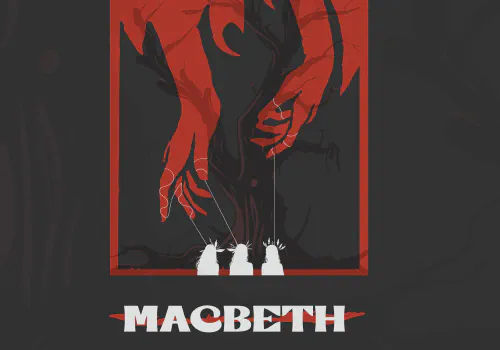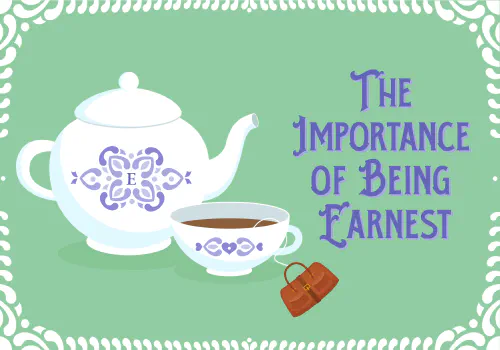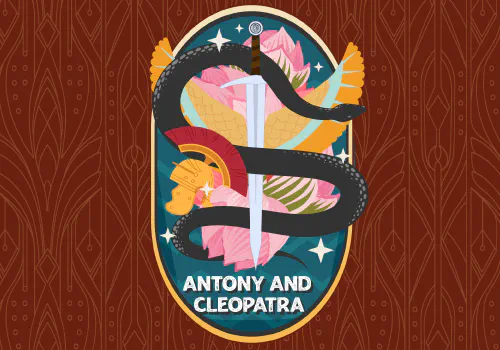By Cheryl Smith
Although The Taming of the Shrew is one of Shakespeare’s most delightful and provocative comedies, it is also one of his most problematic. Chief among its complexities is the puzzle of the Induction, which begins the script with Christopher Sly’s transformation into a lord, yet disappears only after a few scenes later, never to be completed. In the Induction, a wealthy lord stumbles upon a drunken tinker outside an alehouse and decides to trick the unsuspecting stranger into thinking he is truly a wealthy lord who has been slumbering for fifteen years and hence dreaming that he was a poor tinker. The lord dresses the drunkard in fine garments and places him in a bed covered in rich bed linens. When Sly awakens, his luxurious environment convinces him that the lord is telling the truth. After Sly has assumed his new identity, everyone proceeds to a play about the taming of a shrew.
Audiences generally love the Christopher Sly scenes, but Shakespeare’s clever Induction frames only half of the play within the play, where Shakespeare introduces characters who, after Act One Scene One, are never heard from or seen again. In response to this abrupt loss of plot and character, some productions of the play use variations of The Taming of a Shrew, an earlier anonymous play written around 1594, which concludes with a return to Sly as the drunken tinker, who vows to go home and tame his own wife. Whereas Kate’s plot is clearly most crucial to the overall experience of the play, Sly’s sets the tone and warms the audience to the future scenes. Therefore, directors will occasionally choose to bring the play full circle by including scenes from “A” Shrew in “The” Shrew to complete the Sly plot at the conclusion of Shakespeare’s play, thereby exploring both the taming of the “shrew” and the taming of the “tinker.”
The Taming of the Shrew has two fundamental themes: transformation and taming. Not surprisingly, the two themes are inextricably bound because in most cases one (taming) causes the other (transformation). The first transformation audiences see is that of Christopher Sly in the Induction. Upon waking in fine garments and being surrounded by a slew of servants and a “wife,” he finally believes his “true identity” when he mutters the following lines: “Am I a lord, and have I such a lady? / Or do I dream? Or have I dreamed till now? / I do not sleep: I see, I hear, I speak, / I smell sweet savors and I feel soft things. / Upon my life, I am a lord indeed, / And not a tinker nor Christopher Sly” (Ind.2.66–71, all quotes from the Penguin 2000 edition).
This transformation is important because it prepares audiences for the larger, more important change in Kate. We know for certain that Kate has been transformed when she is the only wife who obeys her husband’s command to “come to me” (5.2.100). She immediately returns and asks of Petruchio, “What is your will, sir, that you send for me?” (5.2.106). This, in turn, wins Petruchio his bet and creates the opportunity for Kate to begin her monologue about the importance of being an obedient wife. Both Sly’s and Kate’s transformations, however, are dependent on their “tamings,” and, again, the Induction prepares audiences for the presentation of this crucial theme.
Although Kate’s taming is obvious to audiences since it is the central plot of the play, Sly’s is more subtle. Kate is forced to endure severe hardships like hunger and humiliation before she understands how to obtain what she wants: All she has to do is behave. And as soon as Kate tells Petruchio that she knows the sun is, in fact, the moon (“I know it is the moon” 4.5.17), audiences realize that Kate is “tamed.” Petruchio subdues her by showing that obedience is more powerful than disobedience, a fact most characters by the end of the play come to believe. Petruchio’s “We three are married, but you two are sped” (5.2.191) shows audiences that Kate’s taming will provide Petruchio and Kate with a happy life, whereas Lucentio and Horetensio will have problems in their relationships with their own disobedient wives.
Sly’s taming, on the other hand, is not so obvious, for he is transformed in a directly opposite manner: Instead of being tamed through food deprivation, exhaustion, and humiliation, Sly is transformed through luxury. Kate, a spoiled rich girl, experiences the life of a poor beggar before she commits to change, while Sly, a penniless, drunken tinker, experiences the life of wealth before he believes the stories he is told, and the drunkard is tamed into a lord. Just as Kate’s utterance about the sun shows audiences that she is subdued, Sly’s verbal metamorphosis from prose into rhyme signals his taming. Before Sly believes the Lord’s tales that he is rich, he speaks in prose, which in Shakespeare’s plays is most often used for working-class characters; only after he believes that he is a lord does he begin to speak in verse. Unlike Kate, though, who is truly tamed, Sly is not actually a lord, which is proven when he slips back into prose before he begins to watch the play. His true origins are betrayed by his language, which always indicates character.
The Induction, then, is a vital part of The Taming of the Shrew because it prepares audiences for the transformations and tamings that are about to occur in the play. But the Induction holds an even more important role in the play. While the lord is attempting to transform Sly, the Induction brilliantly transforms Shakespeare’s audience. The play’s Induction tames audiences by changing them into members of a unique and wonderful world available only to them at that particular moment in time. When the Induction is finished, audiences are no longer aware of their real lives—only the fictional lives they are watching onstage. And perhaps this is why Shakespeare never concluded his Induction. He may have wanted to keep audiences in his world for as long as he could, taming and transforming them as thoroughly as possible. All the same, the ending Induction from “A” Shrew shows Sly’s full transformation from tinker to lord and back to tinker, which reminds audiences to take from the play advice which will make their lives richer and fuller. Therefore, one of the primary problems with The Taming of the Shrew is a catch-22. To finish the Induction shows audiences how to enrich their lives; not to finish it suspends audiences forever in Shakespeare’s world. To end with Christopher Sly, or not to end with Christopher Sly: That truly is the question.










